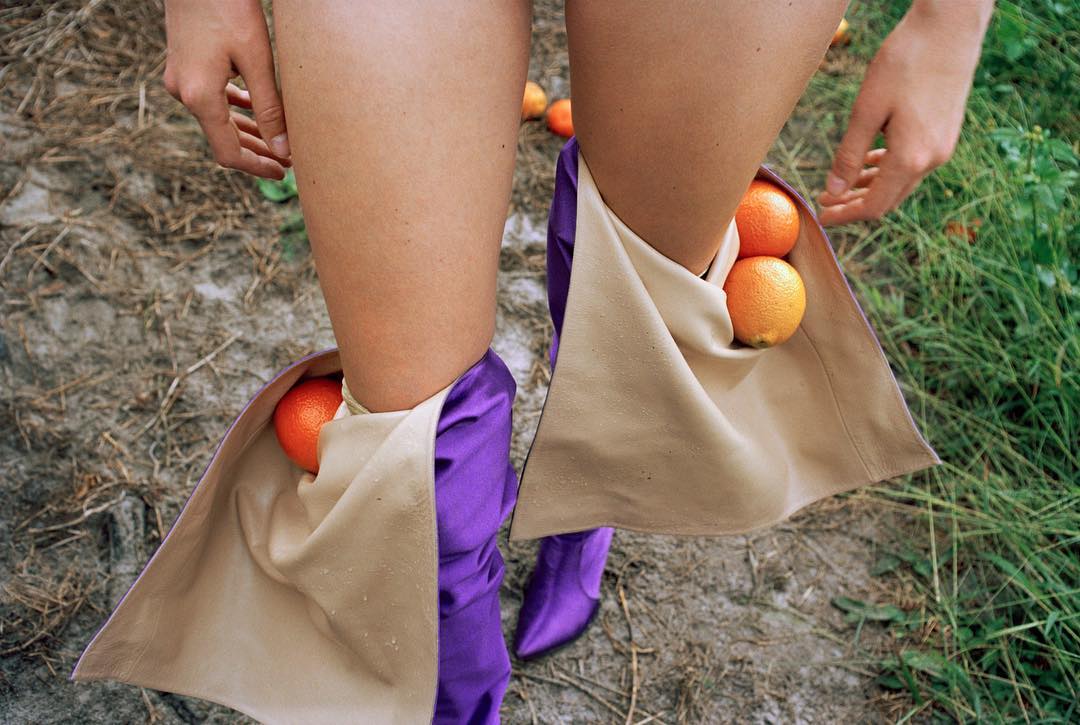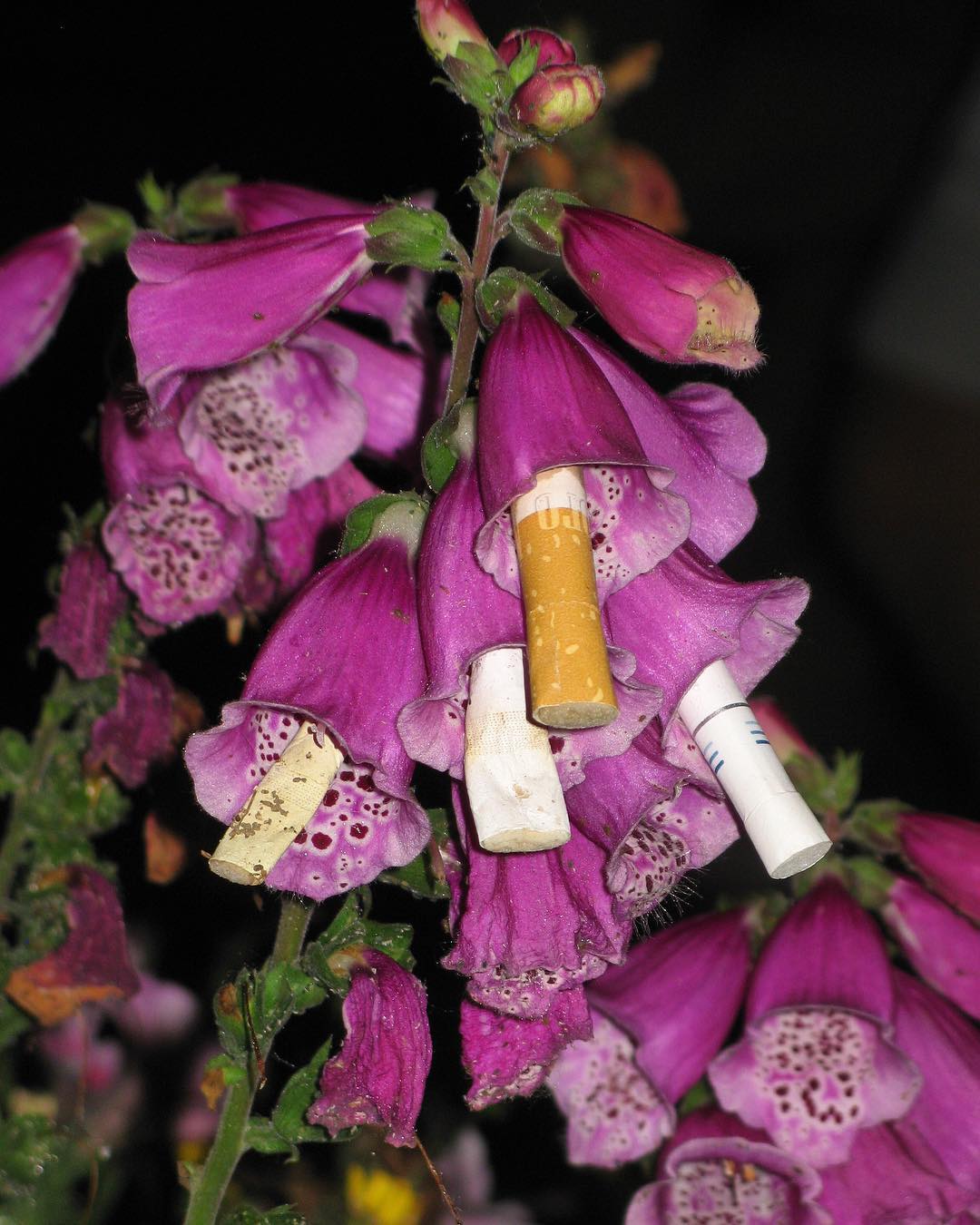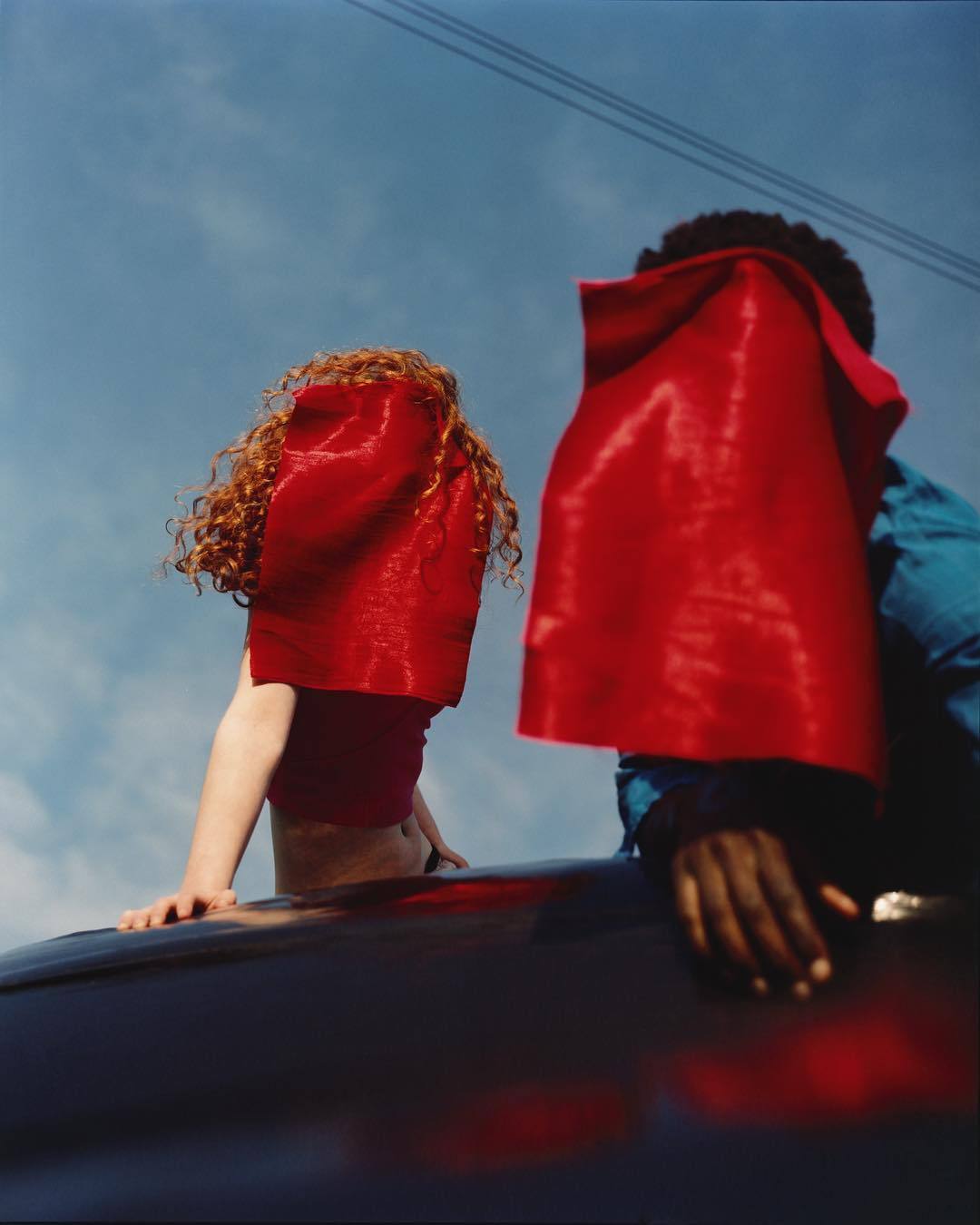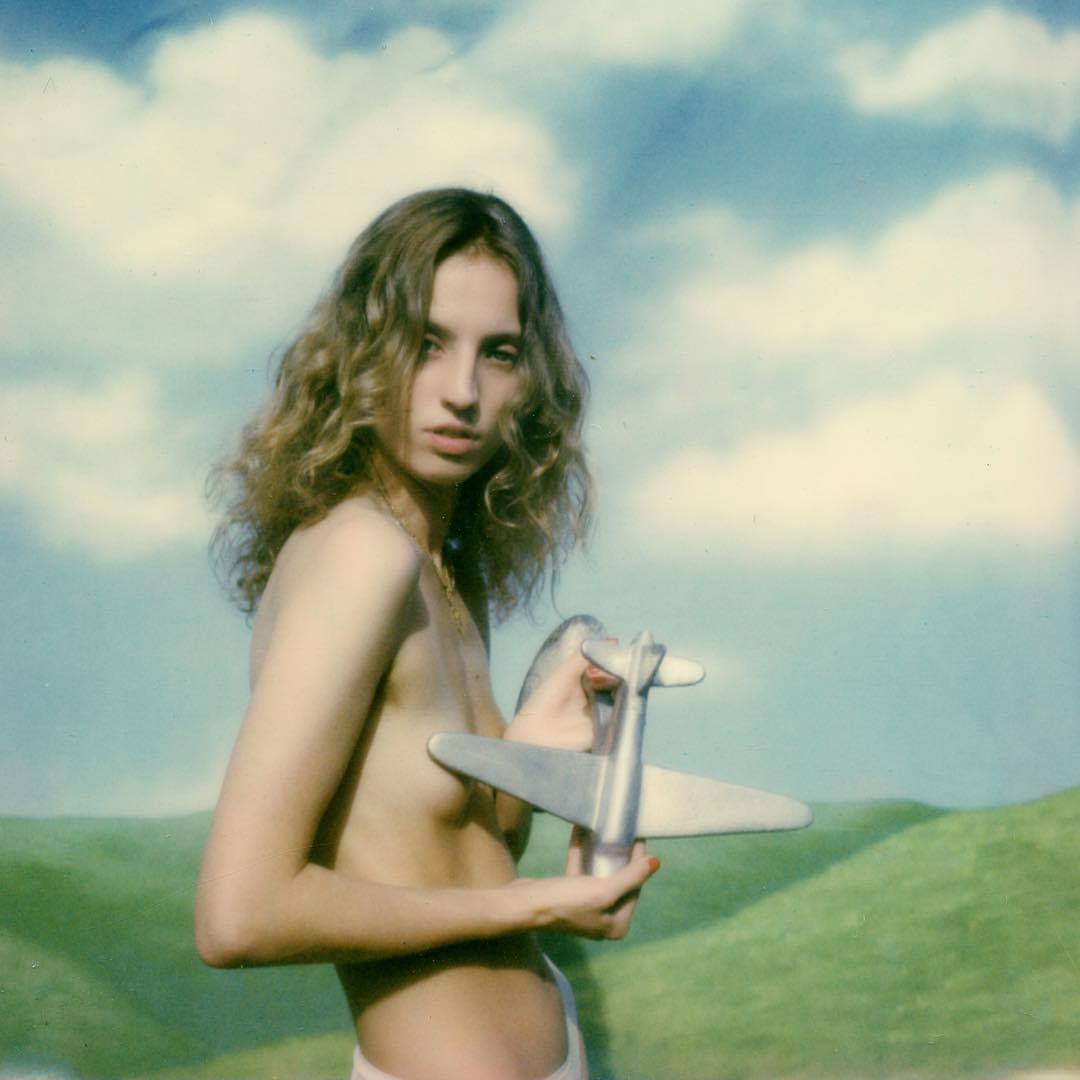© BD PERIPHERIQUE / BE IN OPEN / TEXTS ON FASHION ISSUE 1

Previous Example / Next Example


Open this page on desktop >1200px to see animation


Photo: Brianna Capozzi, Harley Weir
ON CONTEMPORARY VISUAL CULTURE
WE HAVE INTERVIEWED PROFESSIONALS WHO CREATE CONTEMPORARY VISUAL CONTENT. THE PARTICIPANTS OF THE TALK ARE: PHOTOGRAPHERS OKSANA BABENKO,EVGENY SHISHKIN, AND BOGDAN SHIROKOV, AND
TEXTS ON FASHION
HOW WOULD YOU DESCRIBE TODAY'S VISUAL LANGUAGE?


Photo: Harley Wear, Petra Collins
Oksana Babenki: This is definitely something simple, free of "bells and whistles", brightly articulated, and expressive. Nowadays everything happens so fast that people do not have time for contemplation. For that reason, new visual culture has become a disposable commodity — people cast a look only to forget about it the next moment, attracted by something new.
Evgeny Shishkin: In many cases it springs from the ignorance of young people. Artists pass their work off as original and new and gain a lot of success, because the audience often lacks visual erudition to identify a replication.
Bogdan Shirokov: It is a rejection of those norms which were dominant throughout the turbulent 90s and glamorous 00s. Viewers/consumers have become bored with digital media, detailed elaboration, and informativeness. People have lost interest in ideal pictures polished with Dodge&Burn and Autotune. It is time for a more natural-looking and life-true images. The Western artists have turned back to analogue photography. Just think of recent marvellous Gucci campaigns shot by Petra Collins on a 35 mm. This is exactly what we need today.
Emmie America: Recent fashion photography trends have been introduced by Jamie Hawkesworth and Harley Weir. These trends include film, medium format, statics, romantics, and atmospheric warm colours. We are moving away from gloss and "polished" pictures. We are bringing fashion photography closer to documentary, in particularly in terms of style and techniques. We are replacing flash and pulsed light with natural illumination in order to imitate real life.
Together with that, photo sessions remain staged, as it has always been in fashion photography. However, there are less gloss and luxury and more landscapes, flowers, fruits and other simple and straightforward things. The beauty bought with money is going away. I think the mass culture has now started to depict life in a less flat manner.
Evgeny Shishkin: In many cases it springs from the ignorance of young people. Artists pass their work off as original and new and gain a lot of success, because the audience often lacks visual erudition to identify a replication.
Bogdan Shirokov: It is a rejection of those norms which were dominant throughout the turbulent 90s and glamorous 00s. Viewers/consumers have become bored with digital media, detailed elaboration, and informativeness. People have lost interest in ideal pictures polished with Dodge&Burn and Autotune. It is time for a more natural-looking and life-true images. The Western artists have turned back to analogue photography. Just think of recent marvellous Gucci campaigns shot by Petra Collins on a 35 mm. This is exactly what we need today.
Emmie America: Recent fashion photography trends have been introduced by Jamie Hawkesworth and Harley Weir. These trends include film, medium format, statics, romantics, and atmospheric warm colours. We are moving away from gloss and "polished" pictures. We are bringing fashion photography closer to documentary, in particularly in terms of style and techniques. We are replacing flash and pulsed light with natural illumination in order to imitate real life.
Together with that, photo sessions remain staged, as it has always been in fashion photography. However, there are less gloss and luxury and more landscapes, flowers, fruits and other simple and straightforward things. The beauty bought with money is going away. I think the mass culture has now started to depict life in a less flat manner.


Photo: Emmie America
Irina Dubina: I think that fashion photography has started to move away from a trend of the past few years, described as "a model in beautiful clothes stands / sits / lies in a beautiful location / studio", towards ideology. Today simply a beautiful picture does not excite anymore. There are too many photographers / stylists in the industry: and in order to stand out, it is necessary, first, to do something unusual, different from others, and, second, to fill photos with meanings and subtexts.
It is difficult to give a clear description of today's visual code. There are some trends like, for example, a gradual shift from a warm colour correction and a low angle towards a warm / cold colours contrast and a direct angle. At the same time, there are photographers with their own vision — and they also look relevant. It is all about details: light, colour correction, retouching, model type, and styling — all these aspects make a difference in fashion visual art.
Katya Starostina: Today the visual market is developing in a socially responsible direction at a greater pace than ever before. The advertising industry still retains many stereotypes which have existed since the mid twentieth century. However, there are more campaigns, books, and photo shoots that offer an alternative to the "ideal" images that we got used to see. The mass media is now more open to a non-standard beauty, and photography is coming closer to reality — conventional beauty, perfect skin, unnaturally slim physique, and body parameters unachievable for the majority of the people are becoming a thing of the past. The emerging trends are minimal retouching, extended model standards, de-tabooed aging, and beauty diversity.
It has become obvious that ethical issues and relevance of artistic practices must be given more attention. A recent case is Vogue UA July 2018 which led to yet another round of discussion on the difference between cultural appropriation and cooperation, between an "invasive usurpation" and a dialogue of cultures. Dedicated to the East, the issue featured a white model in xenophobic Dolce&Gabbana who sits on tatami in shoes which is not acceptable in the Japanese culture.
It is difficult to give a clear description of today's visual code. There are some trends like, for example, a gradual shift from a warm colour correction and a low angle towards a warm / cold colours contrast and a direct angle. At the same time, there are photographers with their own vision — and they also look relevant. It is all about details: light, colour correction, retouching, model type, and styling — all these aspects make a difference in fashion visual art.
Katya Starostina: Today the visual market is developing in a socially responsible direction at a greater pace than ever before. The advertising industry still retains many stereotypes which have existed since the mid twentieth century. However, there are more campaigns, books, and photo shoots that offer an alternative to the "ideal" images that we got used to see. The mass media is now more open to a non-standard beauty, and photography is coming closer to reality — conventional beauty, perfect skin, unnaturally slim physique, and body parameters unachievable for the majority of the people are becoming a thing of the past. The emerging trends are minimal retouching, extended model standards, de-tabooed aging, and beauty diversity.
It has become obvious that ethical issues and relevance of artistic practices must be given more attention. A recent case is Vogue UA July 2018 which led to yet another round of discussion on the difference between cultural appropriation and cooperation, between an "invasive usurpation" and a dialogue of cultures. Dedicated to the East, the issue featured a white model in xenophobic Dolce&Gabbana who sits on tatami in shoes which is not acceptable in the Japanese culture.
WHAT HAS BECOME OBSOLETE?
Evgeny Shishkin: No one can tell what is obsolete: artists shall decide it for themselves. As for me, I got tired of soft light, pale warm colours, central composition, and the approach to photography as illustration of stylist's work, rather than an artistic statement in its own right. Fashion photography has been in stagnation in the last five years. It can be compared to a period before Richard Avedon, with its statics and single-type composition. Now the situation is changing. More authentic photographers are coming onto the scene.


Photo: Evgeny Shishkin
Bogdan Shirokov: I think many artists exploit analogy photography in attempt to make a trendy picture. They restrict themselves with current trends and leave no space to other options. In a certain sense, they violate some essential artistic rules and create a product which is not quite good enough. My approach is: if you do something, do it well, or rather responsibly, and think primarily of what you like, not what others want to see. I fully understand those who strive for a trendy picture, but it is important to be sensible. So, when selecting a way to express your vision, do not be afraid of experiments, try it all. Who knows, your proper tool may well be an old Siemens A52. Many people ask me why I have chosen analogue photography; they think that the reason is its popularity. My answer is: no, it is not; I have tried various things and found what I like. By the way, oddly enough, recently I have notice that I am mainly following artists who do not shoot on film.
Irina Dubina: Five years ago, everyone went mad about shooting on film, and this was considered merely as a key to success. I know a bunch of photographers who got more appreciation after switching to film (even if work quality did not improve). This led to a snobbish "I only shoot on film" idea as if it makes you cool by default. Today this trend is in decline, because the number of film photographer is so great that it has become a mainstream. Besides, all these static photos with a soft warm light do not seem as appealing as before.
Irina Dubina: Five years ago, everyone went mad about shooting on film, and this was considered merely as a key to success. I know a bunch of photographers who got more appreciation after switching to film (even if work quality did not improve). This led to a snobbish "I only shoot on film" idea as if it makes you cool by default. Today this trend is in decline, because the number of film photographer is so great that it has become a mainstream. Besides, all these static photos with a soft warm light do not seem as appealing as before.

Photo: Bogdan Shirokov
WHO SHALL WE LOOK UP TO?
Oksana Babenko: Harley Weir, Brianna Capozzi
Evgeny Shishkin: Boris Camaca, Hugo Comte, Tyrone Lebon, Frank Lebon, Robi Rodriguez. My advice to young photographers is: never make for yourself an idol and never refer to contemporary masters. Otherwise, you will never form your own opinion. You shall keep an eye on contemporary photographers only to avoid an accidental plagiarism.
Bogdan Shirokov: Alasdair Mcleellan, Petra Collins, Ryan McGinley, Alexandr Saladrigas, Jamie Hawkesworth, Lea Colombo, Jens Indvarsson, Salvatore Caputo, Michael Pudelka, Fumiko Imano.
Irina Dubina: Frankly speaking, it is hard for me to answer this question. I can tell who is watching whom (meaning coping), and I do not really like it. There used to be trends. For example, there was a time when everyone looked up to Meisel and then switched to younger photographers like Vnuk, Dodgson, Lebon, and Weir. Today individuality has come to be appreciated more. Therefore, I do not want to name photographers one shall look up to.
Evgeny Shishkin: Boris Camaca, Hugo Comte, Tyrone Lebon, Frank Lebon, Robi Rodriguez. My advice to young photographers is: never make for yourself an idol and never refer to contemporary masters. Otherwise, you will never form your own opinion. You shall keep an eye on contemporary photographers only to avoid an accidental plagiarism.
Bogdan Shirokov: Alasdair Mcleellan, Petra Collins, Ryan McGinley, Alexandr Saladrigas, Jamie Hawkesworth, Lea Colombo, Jens Indvarsson, Salvatore Caputo, Michael Pudelka, Fumiko Imano.
Irina Dubina: Frankly speaking, it is hard for me to answer this question. I can tell who is watching whom (meaning coping), and I do not really like it. There used to be trends. For example, there was a time when everyone looked up to Meisel and then switched to younger photographers like Vnuk, Dodgson, Lebon, and Weir. Today individuality has come to be appreciated more. Therefore, I do not want to name photographers one shall look up to.
Harley Wear, Jens Indvarsson, Robi Rodriguez, Fumiko Imano, Petra Collins, Ryan McGinley, Boris Camaca, Brianna Capozzi, Hugo Comte, Alexandr Saladrigas, Lea Colombo, Jamie Hawkesworth
TEXT BY MAXIM MURATOV